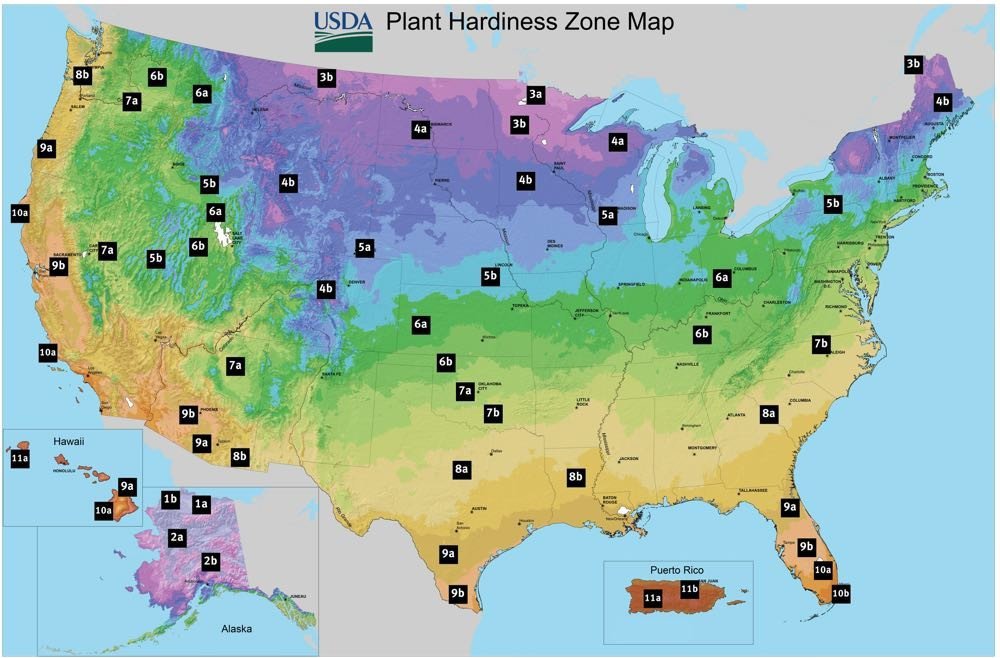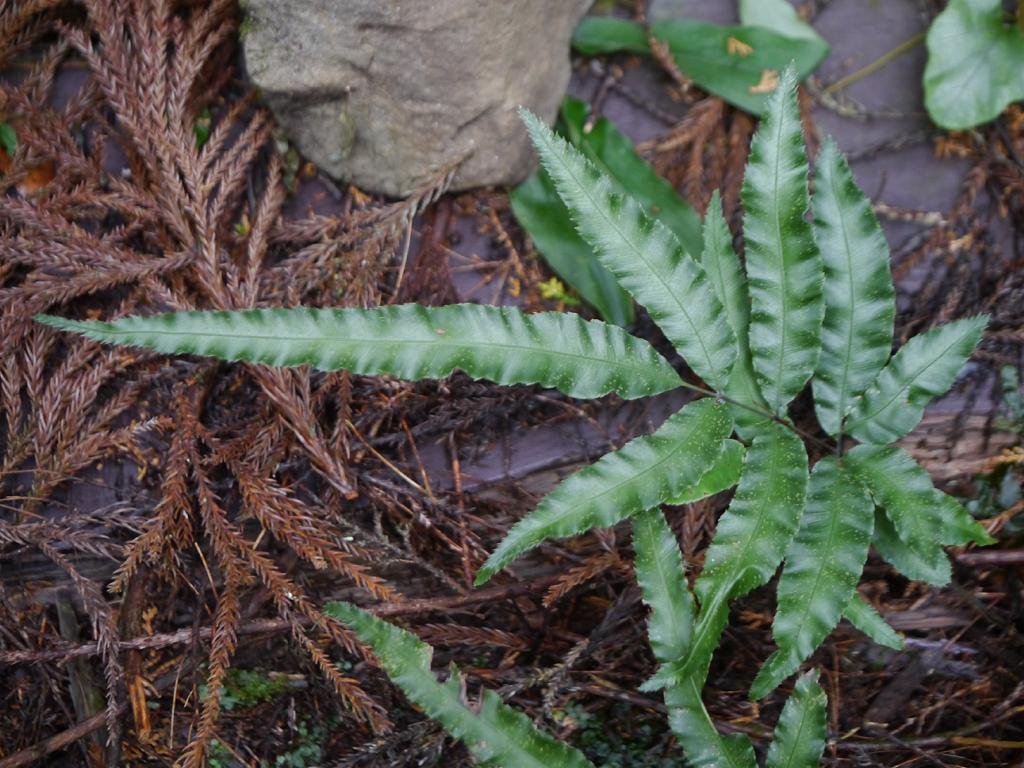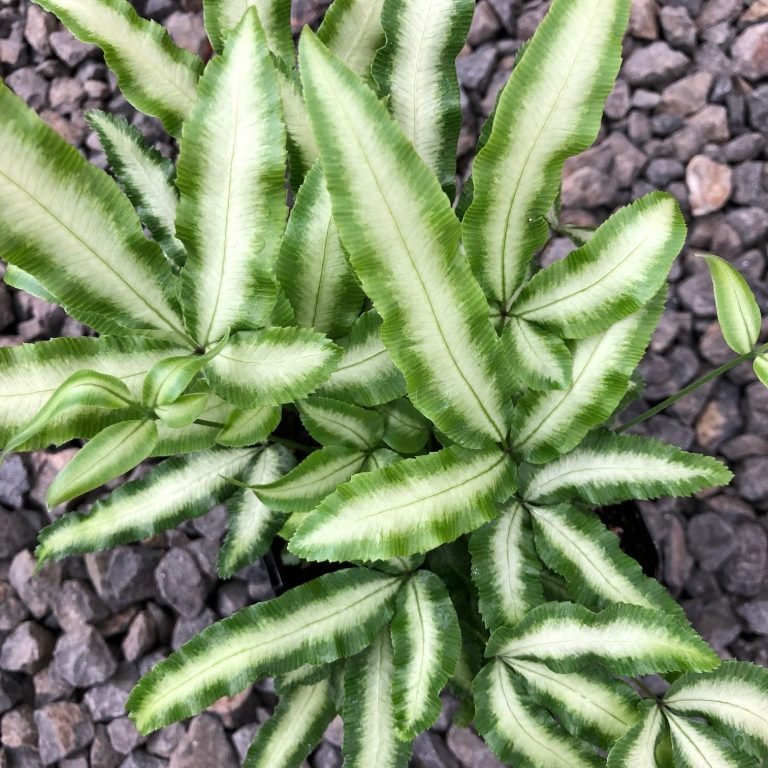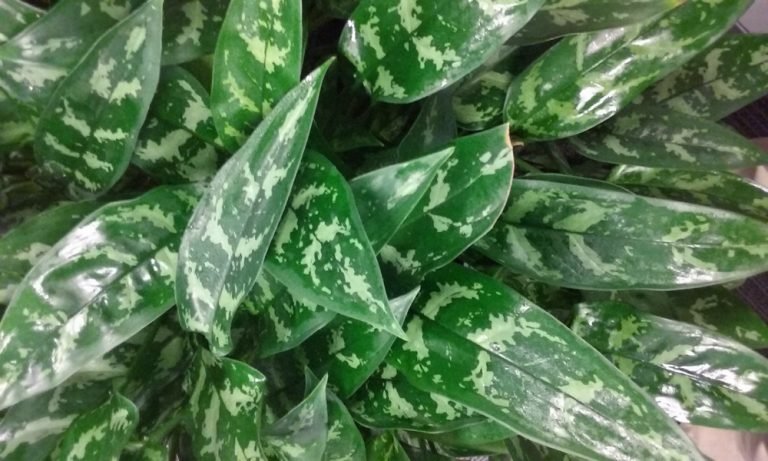Cretan brake (Pteris cretica ‘Parkeri’) – All You Need To Know
About Cretan brake (Pteris cretica ‘Parkeri’)
Pteris cretica ‘Parkeri’ is a cultivar of the Pteris cretica plant, a fern native to the Mediterranean region known for its long, narrow leaves. It is often grown as an ornamental plant in outdoor gardens or as a houseplant, and it requires bright indirect light and regular watering to thrive. The ‘Parkeri’ cultivar is known for its distinctive green and white striped leaves.
General Information
Family: Pteridaceae
Category: Fern
Origin: Cultivar
Native Climate: Tropical humid
Hardiness Zone: 10-9
Best as: Table top & Tertiary plant.
Where to grow Cretan brake?
Cretan brake is a common household plant that can be grown in various environments. They are Tropical humid plants that thrive in the hardiness zone of 10-9 with a minimum temperature of 12 and maximum temperature of 28.
Below is a typical map of the US hardiness zone where you can check your location and see if Cretan brake can survive in your locale.

Cretan brake is native to the Tropical humid climate of Cultivar so it will survive best in a similar climate. However, being from a resilient Pteridaceae family, it can also be found in most unusual places.
Sunlight Requirements of Cretan brake
The idea lighting conditions for Cretan brake is Strong light between 21,500 to 3,200 lux or 2000 to 300 foot-candle. However, it can also survive and grow in diffused light less than 5,300 lux or 500 foot-candle.
Watering Requirements for Cretan brake
When watering household plants like these, it is important to keep the soil moist but not overly wet. Allowing the soil to dry out completely between watering can also stress the plant and negatively impact its growth and health. So the best practice is to keep the soil moist between watering but not let it dry out completely. To check the moisture level in the soil, you can use a moisture meter or simply stick your finger into the soil up to the first knuckle. If the soil feels dry to the touch, it is time to water the plant. If the soil is still moist, it is not yet time to water the plant.
Is Cretan brake prone to insects?
Cretan brake is not prone to insects
Common diseases: N/A
Common posture & style
Cretan brake has a Clump posture and grow in a compact, rounded shape, with multiple stems emerging from a single point.
It has beautiful Dark green leaves. Its main appeal is its Foliage. It can grow up to the height of 0.3 meters with a truck width of 0.3 meters. It has a Regular growth speed under good conditions, watering, and sunlight.
Blooming Season: non flowering
Bloom Color: non flowering
Pruning: Never
Why should you keep Cretan brake in your home?
Keeping a Cretan brake plant in your home can bring many benefits. For one, plants can improve the air quality in your home by removing toxins and releasing oxygen.
In addition, having plants in your home can help increase humidity, which can be particularly beneficial during dry winters.
Additionally, caring for your Cretan brake plant can be a relaxing and therapeutic activity, and Cretan brake in your home can add a touch of nature and beauty to your living space.
Overall, there are many reasons why everyone should consider keeping a Cretan brake plant in their home if the climate is enabling for its growth.








